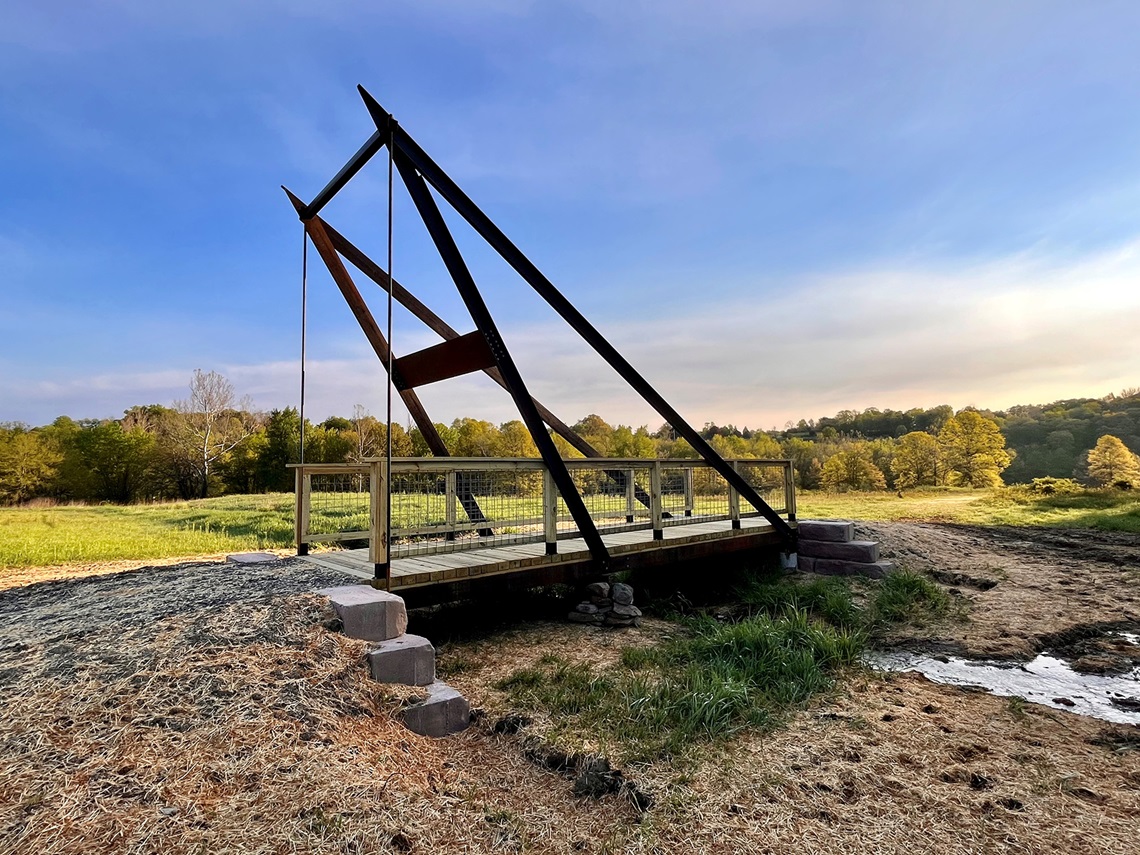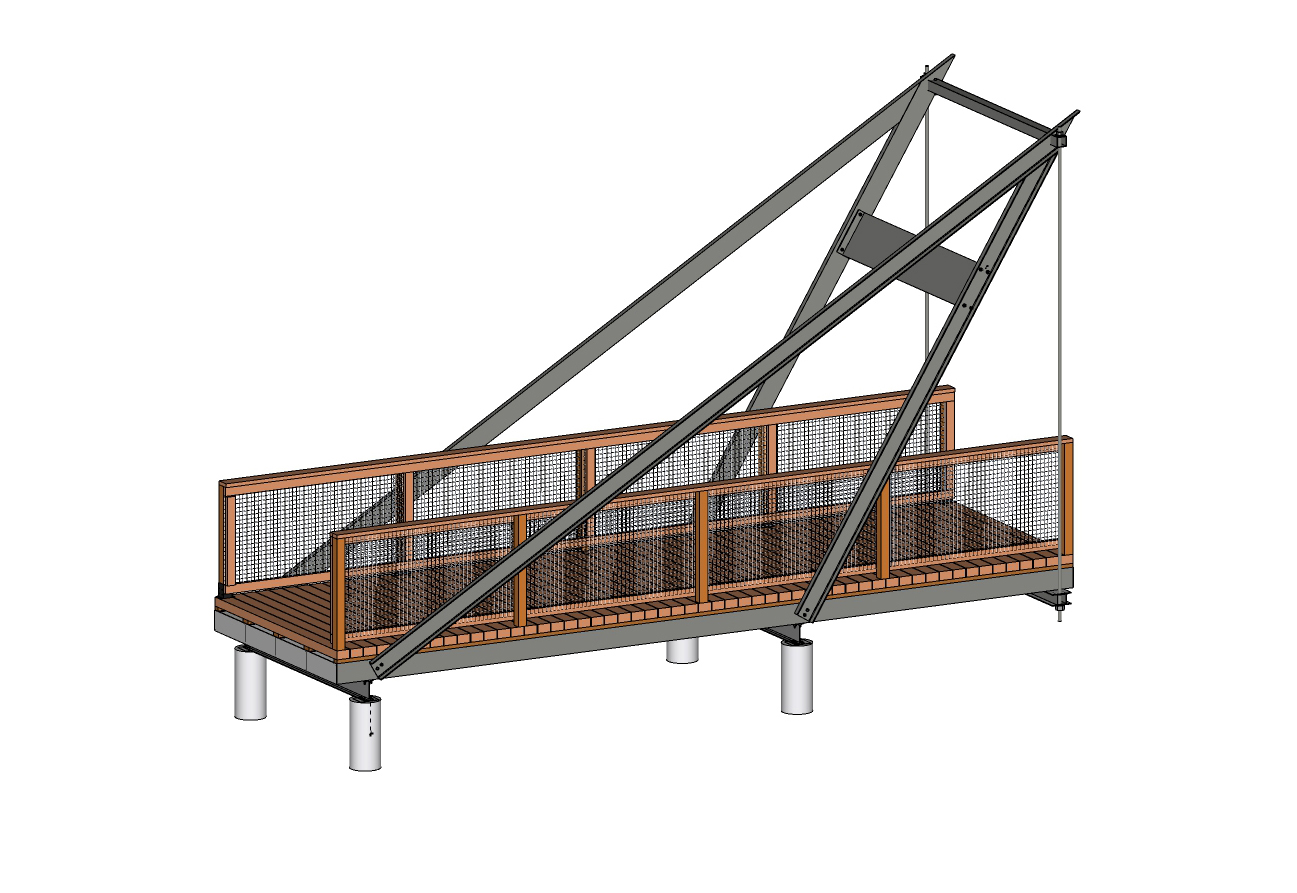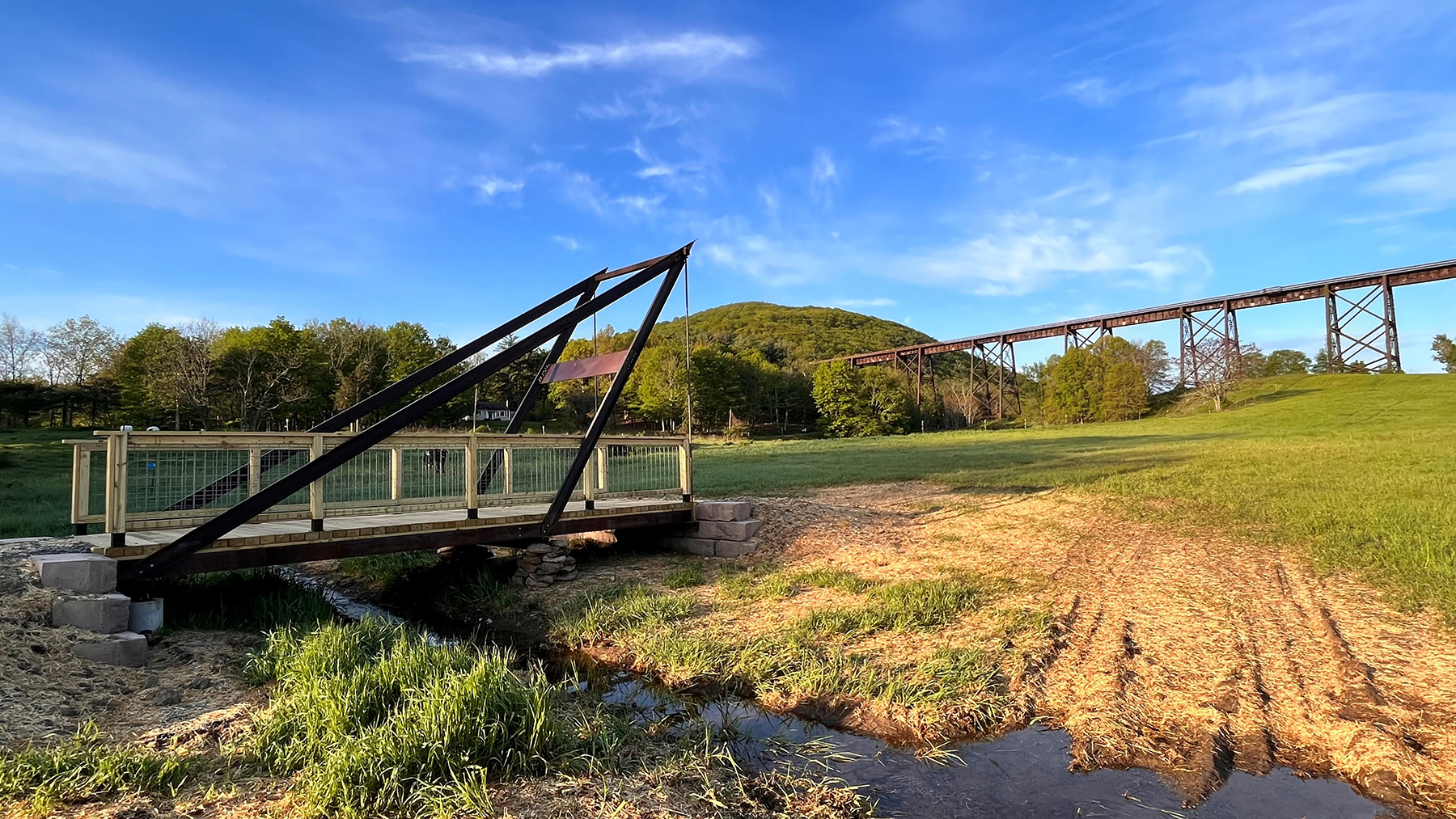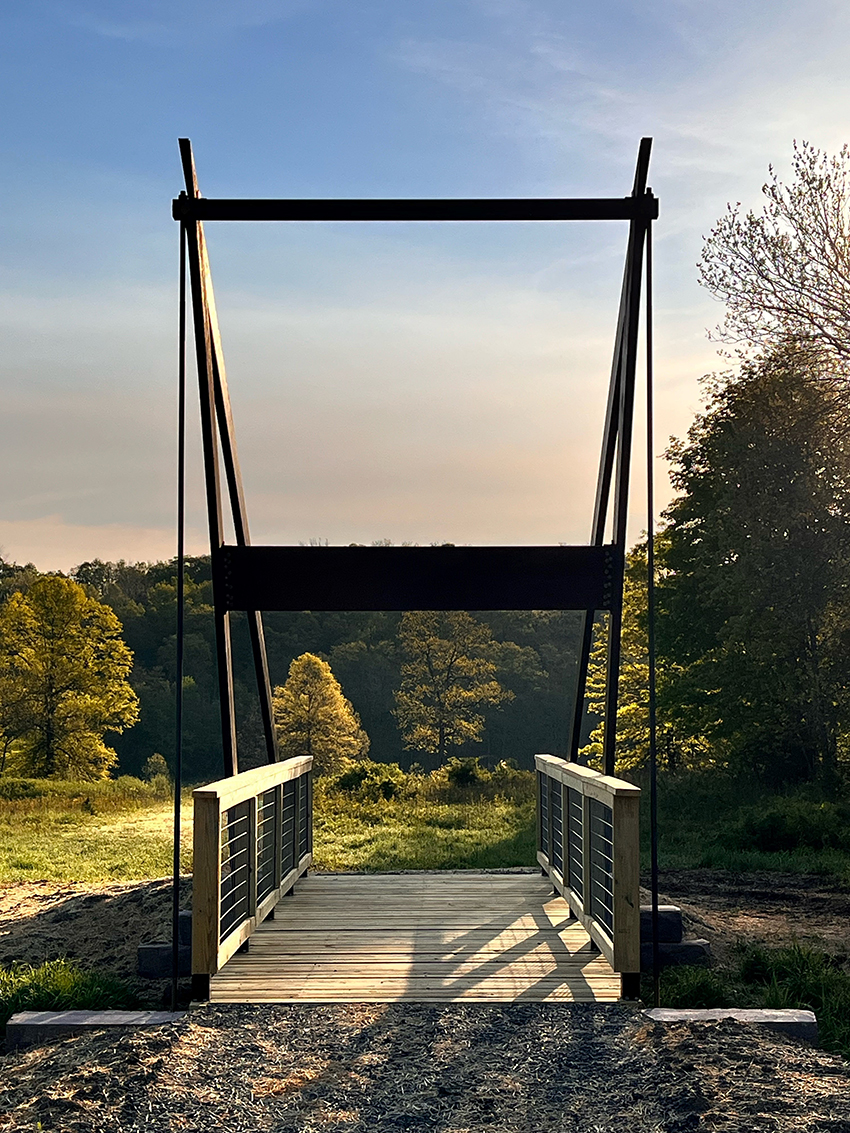By Robert L. Reid
Building bridges has been a critical task for military engineers since ancient times and remains an essential part of educating modern soldiers. Thus, it is not surprising that a bridge-building project has long been a popular capstone event for senior-year cadets at the U.S. Military Academy at West Point, notes Led Klosky, Ph.D., P.E., M.ASCE, a professor of civil engineering at West Point and the Dean’s Executive Agent for Design and Construction. But it is hiking tourists, not marching armies, who generally use the crossings that West Point’s cadets have designed and helped construct in various New York state parks in recent years.

“Building a bridge as a senior capstone is really a perfect mix of the theory and practice that combine to make great engineers,” Klosky explains. “Structural engineering, construction management, leadership, perseverance in the face of real challenges with logistics or clash detection or sequencing — all the tough questions that face civil engineering professionals daily and make our work so exciting come together when the cadets strive to create something with an outcome that really matters.”
Most recently, in May, a team of seven cadets completed a 26 ft long, 8 ft wide steel-framed pedestrian bridge that spans an agricultural drainage ditch in the Schunnemunk Meadows portion of Schunnemunk State Park, about 14 mi west of the West Point campus.

It was the sixth time that a cadet team had worked on the annual bridge project with the Open Space Institute, a nonprofit land conservation organization based in New York City that is developing a new public trail project at the park, says Peter Karis, OSI’s vice president for parks and stewardship.
The Schunnemunk project also involved the New York State Office of Parks, Recreation, and Historic Preservation and the Palisades Interstate Park Commission. In addition to Klosky, two other West Point instructors — Lt. Col. Adrian Biggerstaff, Ph.D., P.E., PMP, M.ASCE, and Gary Jordan, Ph.D., A.M.ASCE — helped supervise the project.
Five senior cadets, plus two younger cadets who served essentially as interns, participated in the Schunnemunk bridge project, says Klosky. The cadets, all civil engineering majors, chose their own project leaders and took charge of the frequent meetings with the various stakeholders, Klosky notes.

Although the vicinity of the project had been preselected, the cadets determined the bridge alignment in the field and decided what sort of bridge to install there and much of the form the structure would take. Their innovative design featured a dramatically slanting steel frame from which the western edge of the bridge deck is suspended above the drainage ditch, Klosky adds. Thus, while the foundations feature precast concrete footings at the eastern end of the bridge and along roughly two-thirds of the structure’s length, the final third of the bridge extends beyond the foundation, with the deck beams being supported from above by hangers suspended from the frame rather than resting on a foundation at the end.
The footings extend underground about 5 ft and were installed with the assistance of a contractor, PE Colucci Excavating Corp., of Gardiner, New York. There are also concrete abutments at each end of the bridge that act as gravity retaining walls.
The bridge was constructed from wide-flanged shapes of weathering steel that form a corrosive layer on the surface to protect the metal from further deterioration, Klosky says. That “gives it a distinctive (rusty) color and makes it wonderfully sustainable because you don’t have to paint it over and over,” he adds. The structure features a wooden deck above its steel beams.

Because the largest pieces of steel for the frame measured nearly 30 ft long, the cadets erected a timber crane in the field to lift those elements into place, Klosky says. The effort involved some of the key engineering skills the cadets are meant to learn from the project — how to work safely and how to “take what you have on hand to solve a problem,” he notes.
The cadets used various computer-aided design tools to determine the form of the bridge, and they created renderings and a 3D-printed plastic model more than a foot in length, says Klosky.
The asymmetric, slanting frame represents a stylized letter A — for Army — and creates “a little bit of motion, a little tension” in the design, notes Karis. The overall form and color palette of the bridge were inspired by the nearby Moodna Viaduct, a historic steel railroad trestle built in 1909 that remains in operation and is visible from the site of the cadet bridge. The design also pays homage to the large, outdoor metal sculptures at the Storm King Art Center, which is just a few miles outside of Schunnemunk State Park, Karis adds.
Klosky praised the “exemplary performance” of the cadet team whose seniors have graduated from West Point and begun their Army careers.
The bridge also performed admirably during a powerful storm that struck the area in July, dumping about 8 in. of water on the region in five hours. “We did a careful study of the bridge after the storm, and it came through with flying colors,” Klosky explains. And while engineers would not plan to test a new structure under such extreme conditions so soon after its completion, “at the same time, we are proud that it performed so well,” Klosky adds.
This article is published by Civil Engineering Online.



